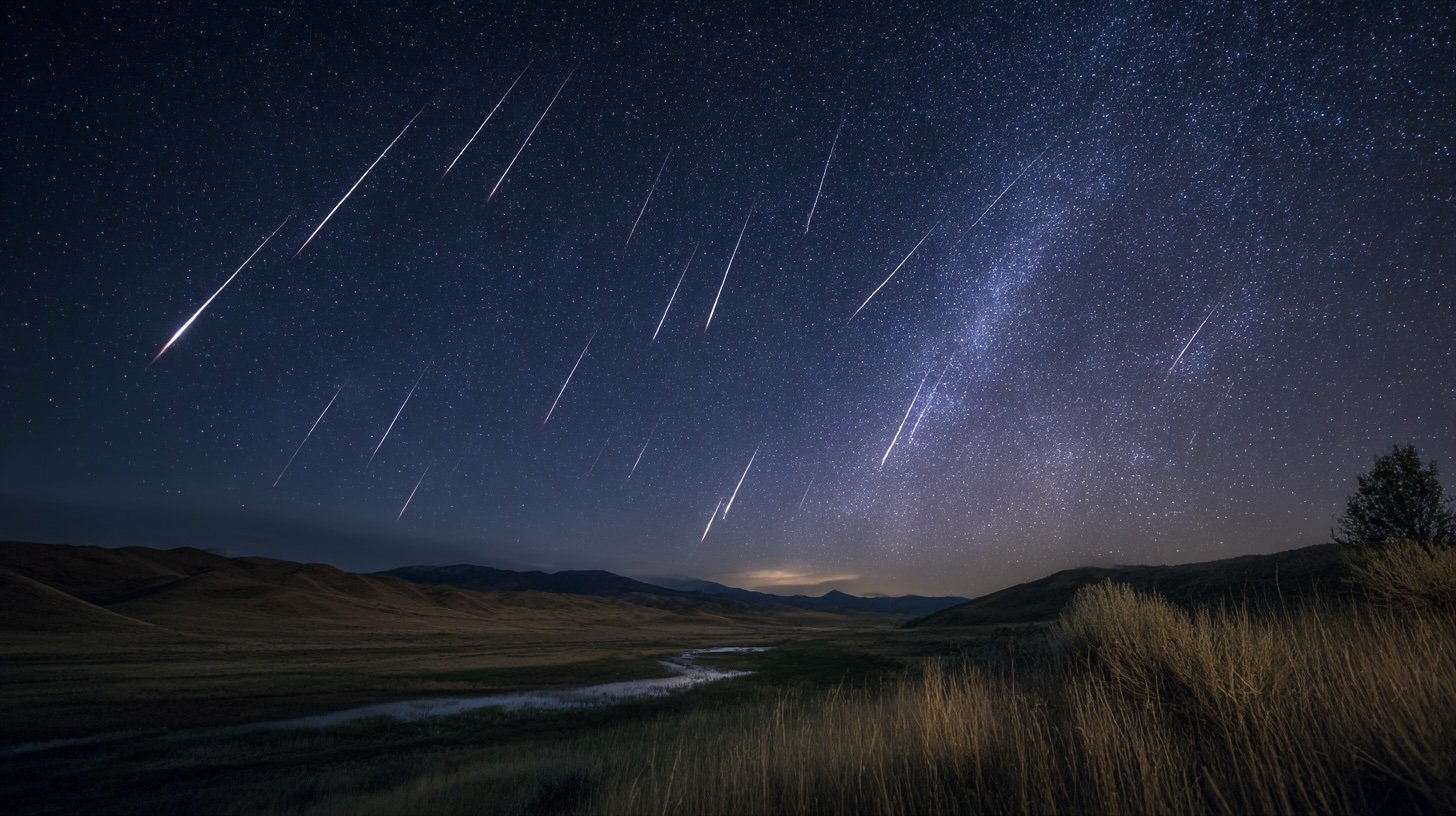Eta Aquariid Meteor Shower: When Halley’s Comet Sends Greetings
Every year around early May, Earth receives a cosmic postcard, courtesy of none other than the Eta Aquariid Meteor Shower. If you’ve ever wished upon a shooting star, chances are you’ve unknowingly been chatting with Halley’s Comet. Surprised? Well, don’t be. Space, like that one friend who always remembers your birthday, has a way of surprising us.
Picture this: it’s a calm spring night. You’re outside, perhaps armed with a cuppa, blanket wrapped tight against the chill, eyes fixed on the vastness overhead. And just when you’re about to call it quits and go back inside—there it is—a quick, dazzling streak across the sky. That’s the Eta Aquariid meteor shower waving hello, making its annual cameo appearance.
What makes the Eta Aquariids special isn’t just the spectacular sky show—it’s their connection to a celebrity comet. These meteors are essentially pieces of Halley’s Comet casually dropping by Earth every year. It’s like Halley’s is the cosmic equivalent of your great-aunt who leaves glitter everywhere she goes. Each meteor streaking across the sky is essentially comet debris burning up gloriously as it enters our atmosphere.
Halley’s Comet swings past Earth approximately every 76 years, making it one of the rare spectacles many only experience once or twice in a lifetime. Its last major appearance was in 1986, and while we wait impatiently for its next visit in 2061, Halley kindly sends tiny souvenirs our way annually. Consider it the celestial version of getting postcards from a distant traveller who visits once every few decades but thinks of you often enough to send yearly reminders.
The Eta Aquariids get their quirky name because their radiant—the spot in the sky from which they appear to originate—is located in the constellation Aquarius, near a star called Eta Aquarii. Yes, astronomers aren’t always the most inventive bunch when naming things. “Eta Aquariids” might sound intimidating, but it’s just space-speak for “those cool meteor things near that Aquarius star.”
To spot these fleeting sky visitors, you’ll ideally want clear, dark skies, away from the maddening glare of city lights. Think countryside, mountains, or even just your garden if you’re fortunate enough to live away from streetlights brighter than a stadium floodlight. The darker your viewing spot, the better your chance to see more meteors. And trust me, once you spot one, you’re hooked.
What makes Eta Aquariid meteors stand out among other showers is their speed. These meteors are incredibly fast, zipping into Earth’s atmosphere at speeds up to 66 kilometres per second—that’s roughly 240,000 km per hour! Blink, and you’ll literally miss them. They often leave glowing trails that can linger in the night sky for a few seconds, like natural fireworks trailing glittering smoke.
Historically, meteor showers like the Eta Aquariids were seen as omens or messages from the gods—sometimes good, sometimes not-so-good. Ancient civilisations from Greece to China gazed upwards, interpreting these streaks as signs of fortune or warnings of impending doom. Thankfully, modern science reassures us these showers are merely cosmic dust and debris putting on a harmlessly dazzling performance, no divine wrath involved.
But observing meteor showers isn’t just about counting streaks across the sky—it’s an exercise in patience and perspective. It’s about realising that every glowing streak represents ancient particles travelling across space and time, remnants from a comet that humans have watched for thousands of years. There’s something strangely comforting in that continuity, isn’t there?
The Eta Aquariid meteor shower peaks around the 5th and 6th of May each year, but it’s visible for several days before and after the peak. Northern hemisphere observers can typically see around 10 to 30 meteors per hour, while lucky stargazers in the southern hemisphere might spot double that number—up to 60 per hour. Yes, the Eta Aquariids clearly favour the southern skies, perhaps as a celestial consolation prize for those experiencing winter’s chill.
No special equipment is needed to enjoy this celestial spectacle—just your eyes, patience, and perhaps some caffeine if you’re not used to late nights. Unlike a solar eclipse or a planetary transit, meteor showers require minimal fuss and provide maximum wonder. It’s the universe’s version of streaming entertainment: free, accessible, and occasionally mind-blowing.
Of course, for the serious astronomy buffs, capturing the Eta Aquariids through photography can be a rewarding challenge. You’ll need a sturdy tripod, a camera with manual settings, and a healthy dose of patience. If you manage to capture one of these meteors streaking across your lens, congratulations—you’ve essentially photographed a celestial celebrity’s footprint.
Why should anyone care about a few rocks burning up in our atmosphere, you might wonder? Fair question. On one level, it’s just space debris. On another, it’s a timely reminder of Earth’s delicate relationship with the cosmos. The Eta Aquariids illustrate the continuous and surprisingly intimate connection our planet maintains with the larger universe around us.
Besides, meteor showers like the Eta Aquariids connect us to history. Think about it—Halley’s Comet was spotted as early as 240 BC and meticulously recorded by Chinese astronomers. Famous historical figures like Mark Twain were famously linked to Halley’s Comet, with Twain himself noting he was born during one of its appearances and eerily predicting he’d die during its next—and he did. When you watch the Eta Aquariids, you’re connecting with a comet that has woven itself through centuries of human storytelling and superstition.
In the grand scheme of the universe, Earth is a tiny speck hurtling through space. Yet, every year, as our planet faithfully crosses Halley’s dusty trail, we get treated to this stunning cosmic dance. It’s a friendly reminder that space isn’t just a vast, cold emptiness—it’s alive with history, wonder, and, occasionally, irony.
So since it’s May, there’s no better time to step outside, look up, and greet Halley’s cosmic postcards. Who knows? Maybe your next wish upon a star could come courtesy of Halley himself—though he’s unlikely to take complaints if wishes don’t materialise.
